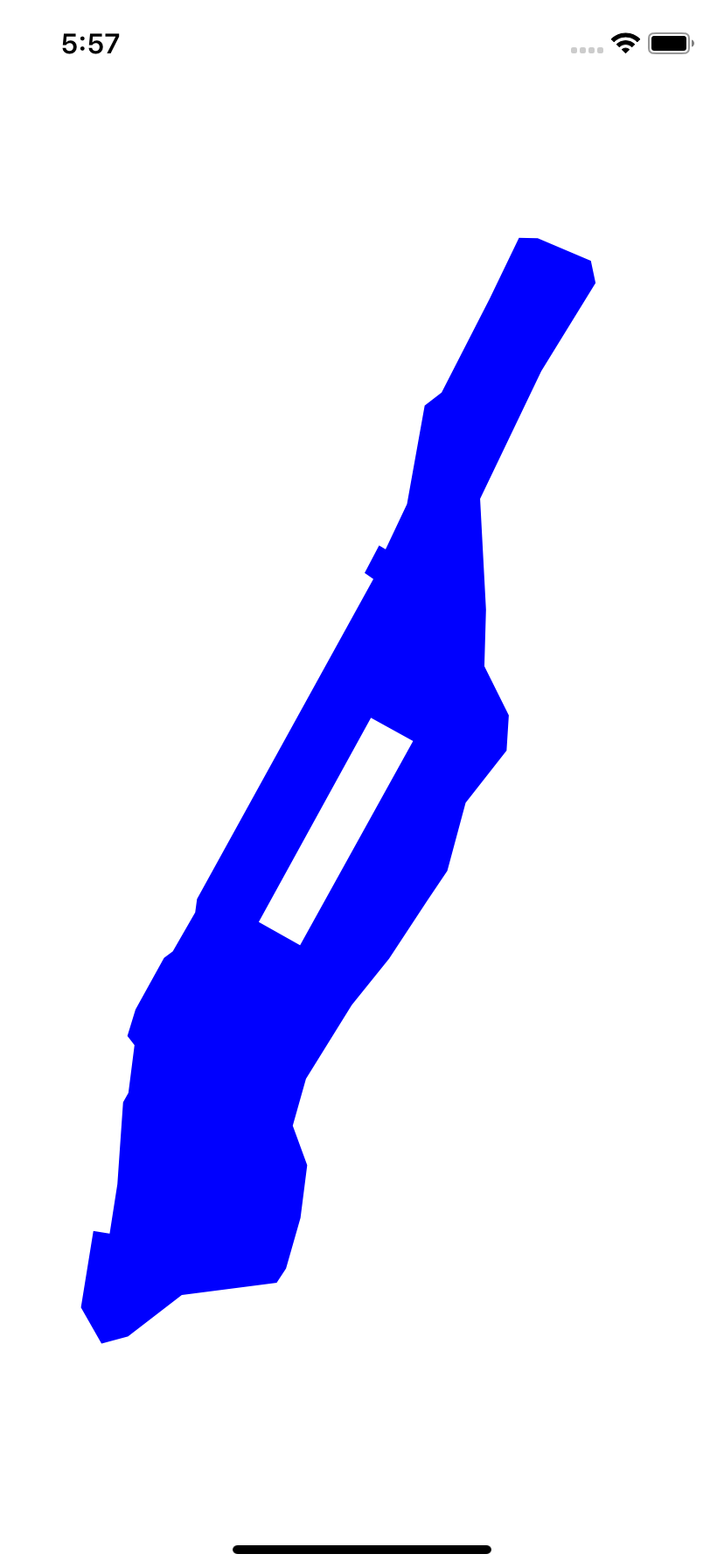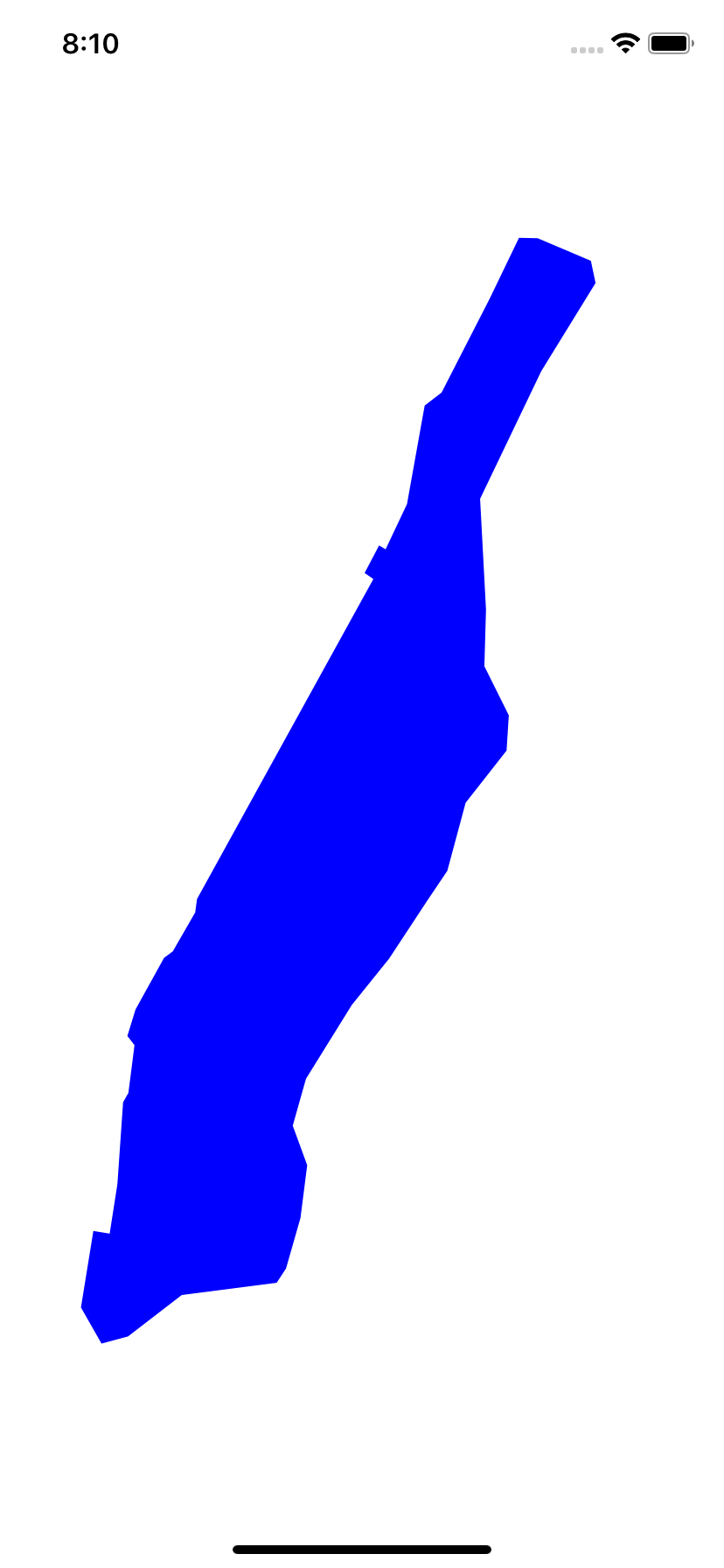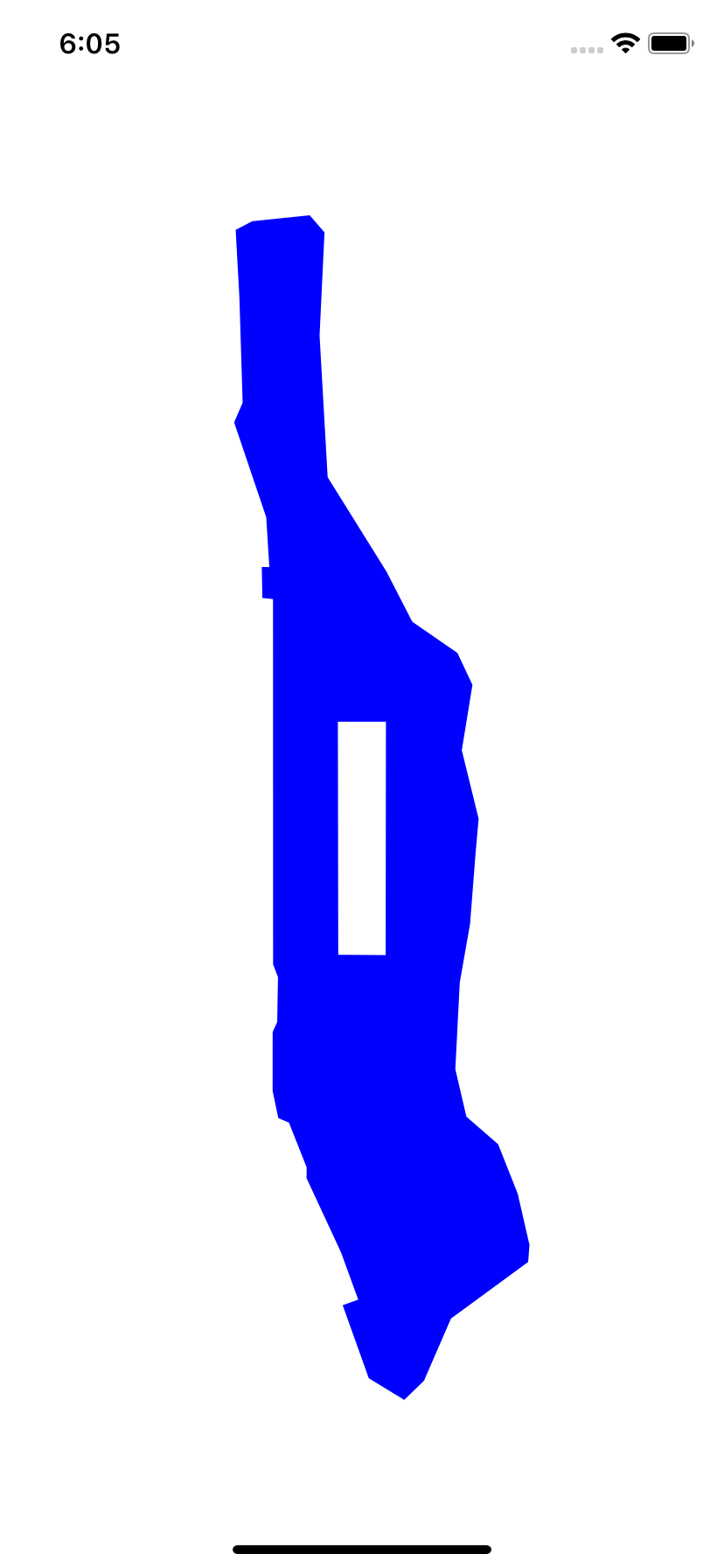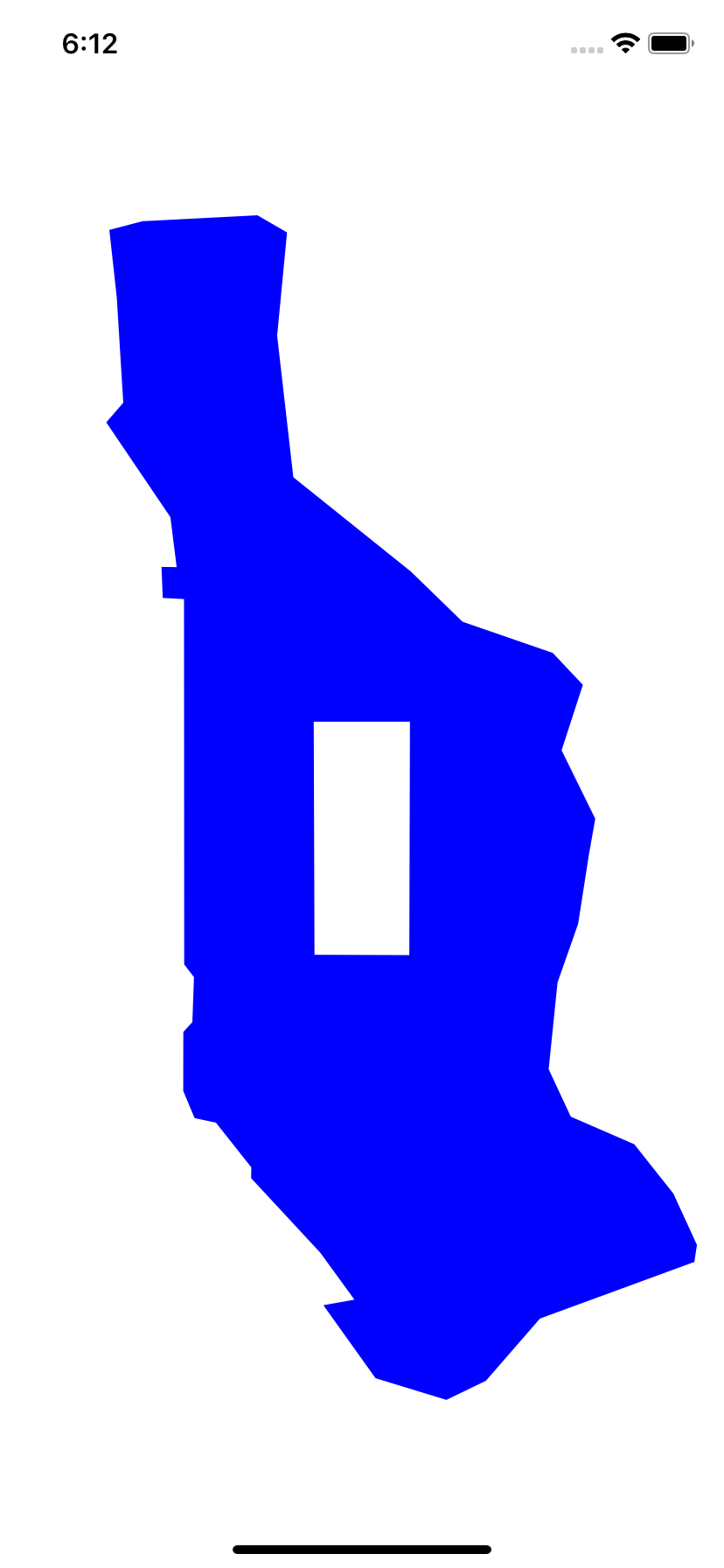closePath().
//clockwise perimeter of Central Park c.move (to: CGPoint(x: -73.97305, y: 40.764291)); //Grand Army Plaza c.addLine(to: CGPoint(x: -73.981762, y: 40.767997)); //Columbus Circle c.addLine(to: CGPoint(x: -73.958116, y: 40.800556)); //Frederick Douglass Circle c.addLine(to: CGPoint(x: -73.949235, y: 40.796848)); //Duke Ellington Circle c.closePath(); //back to Grand Army PlazaThe four corners of Central Park consitute a subpath. To see why the park is not filled in, read about winding numbers. This will explain why I went counterclockwise around the shoreline and clockwise around Central Park.

scaleBy(x:y:).
(If it was after,
the angle would have to be positive for counterclockwise.)
c.rotate(by: CGFloat(GLKMathDegreesToRadians(-28.9))); //negative for counterclockwise
rotate(by:).
(What would happen if we inserted it after the
rotate(by:)?)
c.scaleBy(x: 2, y: 1); //Make Manhattan fat.
1.0 / scalescale.
init
once and
draw(_:)
once.
The
init
method of a view object will always be called only once,
but
draw(_:)
may be called many times.
draw(_:)
We should therefore move as much of the work as possible from
draw(_:)
into
init.
Add the following property to class
ManhattanView.
We saw it in the fill and stroke triangle example in
Japan.
There is no need to call
CGPathRelease
in Swift.
//in ManhattanView.swift, immediately after the class View: UIView { var shoreline: CGMutablePath = CGMutablePath();
Initialize
shoreline
in
init,
immediately after setting the
background
color:
let a: [(latitude: CGFloat, longitude: CGFloat)] = [ //an array of tuples (40.72921, -73.971548), //East River at East 17th Street (40.735519, -73.974595), //24 (40.742998, -73.971806), //34 (40.754767, -73.96215), //53 (40.762146, -73.954296), //65 (40.771474, -73.946185), //81 (40.776154, -73.942022), //89 (40.776154, -73.942022), //96 (40.787008, -73.93816), //103 (40.795326, -73.929534), //118 (40.800946, -73.929062), //125 (40.808775, -73.934212), //Harlem River at 132nd Street (40.817772, -73.933868), //143 (40.83547, -73.935113), //163 (40.855857, -73.922195), //Dyckman Street (40.869878, -73.91078), //218 (40.873416, -73.911767), //Broadway Bridge (40.877018, -73.922968), //Henry Hudson Parkway Bridge (40.877082, -73.926916), //Hudson River (40.867379, -73.933096), //Riverside Drive (40.852417, -73.943224), //Hudson River at West 181st Street (40.850339, -73.946786), //George Washingon Bridge (40.850339, -73.946786), //168 (40.834626, -73.95052), //155 (40.827417, -73.955026), //144 sewage treatment plant (40.828034, -73.956399), //144 (40.82365, -73.959446), //137 (40.822676, -73.957601), //137 (40.771669, -73.994765), //57 (40.769524, -73.995152), //54 (40.763316, -73.999872), //44 (40.762276, -74.001718), //42 (40.754052, -74.007726), //29 (40.749825, -74.009442), //23 (40.748362, -74.00794), //21 (40.740754, -74.009228), //Meatpacking District (40.739258, -74.010344), //Gansevoort Street (40.726218, -74.011545), //Holland Tunnel (40.718315, -74.013176), //Battery Park City (40.718737, -74.016609), //Battery Park City (40.706539, -74.019227), //South Cove (40.70078, -74.014893), //Battery Park (40.701919, -74.009314), //Heliport (40.708523, -73.997984), //north of Brooklyn Bridge (40.710475, -73.977985), //Corlears Hook Park (40.712752, -73.976011), //Grand Street (40.720819, -73.972964) ]; CGPathMoveToPoint(shoreline, nil, a[0].longitude, a[0].latitude); for var i = 1; i < a.count; ++i { CGPathAddLineToPoint(shoreline, nil, a[i].longitude, a[i].latitude); } CGPathCloseSubpath(shoreline);
Change the body of
draw(_:)
to the following.
//Drawing code //Latitude and longitude in degrees of the heart of Manhattan, //probably somewhere around the Angel of the Waters in Central Park. let latitude: CGFloat = 40.79; //north of equator is positive let longitude: CGFloat = -73.96; //west of Greenwich is negative //How many pixels per degree of latitude (approx. 60 miles). //The screen will cover 1/4 of a degree of latitude vertically. let scale: CGFloat = 4 * bounds.size.height; let c: CGContextRef = UIGraphicsGetCurrentContext(); CGContextBeginPath(c); //unnecesary here: the path is already empty //Three transformations: //Transformation 1: move the origin (0, 0) to the center of the View. CGContextTranslateCTM(c, bounds.size.width / 2, bounds.size.height / 2); //Transformation 2: magnify Manhattan to make it big enough to see. //Also make the Y axis point upwards so that north is up. let radians: Float = GLKMathDegreesToRadians(Float(latitude)); CGContextScaleCTM(c, scale * CGFloat(cos(radians)), -scale); //Transformation 3: move the camera from the South Atlantic Ocean //left and up to Manhattan. More precisely, move Manhattan right //and down to the South Atlantic. That's why there are negative signs. CGContextTranslateCTM(c, -longitude, -latitude); CGContextAddPath(c, shoreline); CGContextSetRGBFillColor(c, 0, 0, 1, 1); //blue, opaque CGContextFillPath(c);


